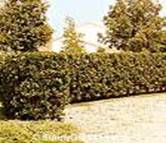| Kingdom | Plantae |
| Division | Magnoliophyta |
| Class | Magnoliopsida |
| Order | Rosales |
| Family | Rhamnaceae |
| Genus | Rhamnus |
| Species | R. frangula |
| Binomial name | Rhamnus frangula |
Other Common Names:
The other common names for the alder buckthorn are Alder Buckthorn, Alder Dogwood, Arrowwood, Black Alder Tree, Black Dogwood, European Black Alder, Glossy Buckthorn and Persian Berries.
History
The name alder buckthorn is not to be taken literally as a description for the plant; the tree itself is not an alder and cannot be considered thorny in any way. The direct translation of the trees fanciful Italian name is the reason, this plant is called buckthorn in English, the Italian name for the plant "spino cervino", or "stag's thorn" is quite inaccurate.

Description
he alder buckthorn can be considered a deciduous shrub or even a small tree, the plant often reaches 20 feet in height when fully mature. The spreading, thornless branches have green bark when young, turning to brownish-gray when older. Glossy green leaves are quite unusual in that they have the general appearance of fern pinnae: extremely narrow (to 2.5" long but only 2" wide) with irregular margins.


Range
Large parts of the northeastern United States and parts of Europe have significant areas in which the alder buckthorn grows. Thus it covers a wide range Europe, including Britain, from Scandanavia south and east to N. Africa, the Urals and Siberia.
Habitat
The deciduous native tree tends to be an early coloniser of poor and inhospitable sites. It is particularly useful in wet ground where it thrives in conditions that would drown most trees. The Tree likes wet conditions and grows close to high water-tables and is common along streamsides and in marshland. Thus it is generally seen in Swamps and damp places, usually on moist heaths and damp open woods, preferring a peaty soil.
Cultivation
The common alder prefers light shade but will tolerate full sun or moderate shade. It also tolerates wet soils but will not grow well in dry ones. Seed are best sown in the autumn in a cold frame. Stored seed will require 1 - 2 months cold stratification at about 5° and should be sown as early in the year as possible in a cold frame or outdoor seedbed. Germination is usually good, at least 80% by late spring. Prick out the seedlings into individual pots when they are large enough to handle, and grow them on in the greenhouse or cold frame for their first winter. Plant them out in late spring or early summer of the following year. Cuttings of half-ripe wood, July/August in a frame. Cuttings of mature wood of the current year's growth, autumn in a frame. Layering in early spring. Late spring to early summer is the usual time during which the bark of the alder buckthorn trees is collected - such trees are at least 3-4 years old, the collected bark is dried and then placed in storage for at least another year before it is utilized in different herbal remedies.
Flowering Season
The alder buckthorn also bears little greenish white coloured flowers, these are typically in bloom during May thorough July.
Pests and Diseases
The fungus Phytophthora sp. which grows upwards from the bottom of the tree, killing the roots and bark. This has become a widespread problem in England and Wales, where over 10% of riparian alders are either dead or infected with the fungus. The other problem affecting alders is crown dieback, which results in the tree dying from the top downwards. This condition was first noted in the northwest of Scotland in the 1980s and has subsequently spread throughout the Highlands: in some riparian areas of Glen Affric, for example, most of the alders are affected. The cause of crown dieback is still unknown, and research into the problem is ongoing.
Parts Used

The barks and the leaves are the most commonly used parts of the Alder tree for its commercial and medicinal applications.
Medicinal Applications

• Alder Buckthorn is used as a tonic, laxative and cathartic.
• Externally, the bark is used to treat gum diseases and scalp infestations, or as a lotion for minor skin irritations.
• Its bark is used to cure chronic constipation.
• It is taken internally as a laxative for chronic atonic constipation and is also used to treat abdominal bloating, hepatitis, cirrhosis, jaundice, and liver and gall bladder complaints.
• A decoction may also be used to staunch internal or external bleeding and to heal wounds.
• The fruit is occasionally used, it is aperient without being irritating.
• Alders are also valued for the nitrogen-fixing bacteria that colonize their roots and thereby enrich the soil.
• Alder leaves are smoothed and placed on the soles of the feet to relieve aching.
Commercial Applications


• Dyes were also sourced from the alder buckthorn, and a yellow dye was produced from the bark, while the unripe alder berries were used in the production of a green dye - these dyes were utilized in various manufactures.
• The wood is used to make wooden nails, shoe lasts, veneer etc.
• It is the source of a high quality charcoal that is used by artists


Alder buckthorn were attributed strange and terrible powers at various times down the centuries, the plants were supposed to posses the power to protect individuals against witchcraft, they were believed to be capable of warding off demons, and they were also apparently used to flush out poisons, and to treat headaches in different people. Paradoxically, while attributing the alder buckthorn with all these powers, the ancient herbalist ignored the much more prosaic but proven herbal value of the bark as an effective laxative, the actual widespread use of the plant in this role came only in the 1300's, when the power of the alder buckthorn as an herbal laxative was discovered.